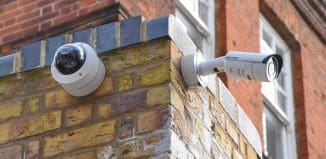It is Better to be Smart than Safe – The growing buzz surrounding Safe Cities
This post is also available in:  עברית (Hebrew)
עברית (Hebrew)
 In a world that seems ever more dangerous, some cities are taking extreme measures to ensure their residents’ safety. Recent events of crime, terrorism and natural disasters only elucidate the need for a more systemic method of preventing and managing catastrophes, big and small.
In a world that seems ever more dangerous, some cities are taking extreme measures to ensure their residents’ safety. Recent events of crime, terrorism and natural disasters only elucidate the need for a more systemic method of preventing and managing catastrophes, big and small.
An increasingly prominent security buzzword, Safe City refers to an intersection between different elements of communication, command and control, sensors, biometrics, IT connectivity, cyber security and more. Recent security events which have resonated in the global community, such as the recent Boston bombings or the wave of sexual violence in India, have generated more interest in Safe City solutions. Prominent examples include statements by Police forces across the U.S. committing to increase video surveillance and stated plans by New Delhi authorities to install over 5,000 CCTV cameras across the city.
More than just Surveillance – Connectivity is Essential
i-HLS ISRAEL Homeland Security
However, video surveillance is not enough to qualify as a Safe City solution. According to research by Frost & Sullivan from 2010, video surveillance and civil security air surveillance represent approximately 66% of revenue contribution to safe city projects. This is indeed a very significant chunk of revenues which are estimated to reach $80-$85 billion by 2020. Yet, in order for a project to truly constitute a ‘safe city’ it must be able to integrate all of the security-relevant information on a cross-cutting IT Platform. A truly qualified safe city will be able to converge public safety information tapped via video surveillance, sensors, biometrics and access control with additional information relating to city infrastructure. Therefore, a driving factor in pushing Safe City project deployment is a city’s capacity to implement the most advanced IT, analytics, computing and infrastructure solutions. These solutions are often embodied in Smart City solutions and require significant resources to harness.
Converging Competitor Landscape
The convergence between IT technology and defense technology is creating a landscape of strange supplier bedfellows. Meidata analysts have been following this trend of IT giants creeping into the defense space and vice-versa. One exemplary leader of this trend has been IBM, which claims to currently work on approximately hundreds of smart city projects globally. ‘Safe City’ components are often intertwined within the wider framework of these projects. Prominent examples include ambitious projects in metropolitans such as Chicago and Madrid in which the company deployed solutions to coordinate security forces resources, databases and surveillance tools under one umbrella. These solutions are leveraged by IBM’s competencies in analytics and data management. Additional companies which been leading the charge in supplying converging solutions include Cisco, Siemens, Alcatel-Lucent and Ericsson. Meidata’s research indicates that the traditional IT or infrastructure players, such as those noted above, have been quicker to roll-out products and forge partnerships to position themselves in the ‘Safe City’ market niche than have the traditional defense industry leaders, such as Raytheon, Northrop Grumman and other large defense companies. Although defense companies have made increasing investments in the fields of surveillance and sensor technologies, it remains to be seen whether they are able to position their solutions to interest civil-municipal clients as an all-in-one provider.
Written by: Meidata





























